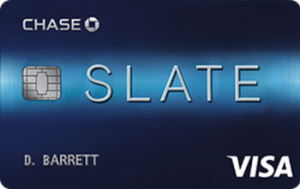
When you need to pay down credit card debt or finance a large purchase, a 0% APR credit card can be your best friend. But with so many out there, it can be difficult to know which to choose. Here’s a comprehensive guide to walk you through the ins and outs of 0% APR cards so you can find the one that’s perfect for your wallet.
ALSO READ: CardCruncher’s Complete Guide to Improving Your Credit Score
What are the best 0% APR credit cards of 2020?
Here’s a closer look at some of the best 0% APR credit cards. Check out our reviews for full details.
U.S. Pride BankAmericard Cash Rewards Visa Card

U.S. Pride Credit Card
Annual fee: $0
APR: 0% for 12 months, then 15.24% to 25.24%
Balance transfer fee: Either $10 or 3% of the balance transfer, whichever is greater
Bonus: $200
Pro: Bank of America customers earn bonus rewards when cash back is deposited to a Bank of America account.
Con: Bank of America caps the 3% back at gas stations and 2% back at grocery stores and wholesale clubs at $2,500 per quarter.
Citi Simplicity Card

Citi Simplicity Card
Annual fee: $0
APR: 19.24% - 29.99 (Variable)
Balance transfer fee: Either $5 or 5% of the balance transfer, whichever is greater
Bonus: $0
Pro: Citi won’t charge you late fees or a penalty APR if your payment is late.
Con: You can’t earn any rewards with the Citi Simplicity Card.
Chase Slate

Chase Slate
Annual fee: $0
APR: 0% for 15 months, then 17.24% to 25.99%
Balance transfer fee: $0 for the first 60 days account is open, then $5 or 5% of a balance transfer, whichever is greater.
Bonus: $0
Pro: Offers an unbeatable $0 transfer fee with intro 0% APR. It also only requires good credit.
Con: Doesn’t earn any rewards, so it’s less useful once you pay off large balances.
Bank of America Cash Rewards Credit Card

Bank of America Cash Rewards
Annual fee: $0
APR: 0% for 15 months, then 16.24% to 26.24%
Balance transfer fee: Either $10 or 3% of the balance transfer, whichever is greater
Bonus: $200
Pro: Earn rewards on your everyday purchases and get bonus rewards if you redeem them to a Bank of America checking or savings account.
Con: Bonus rewards categories are capped at $2,500 each quarter.
Bank of America Travel Rewards Credit Card

Bank of America Travel Rewards
Annual fee: $0
APR: 0% for 12 months, then 16.99% to 24.99%
Balance transfer fee: Either $10 or 3% of the balance transfer, whichever is greater
Bonus: 25,000 points
Pro: Earn 1.5X miles on every dollar spent and redeem them when and how you want for travel.
Con: The card doesn’t offer travel-related perks you find on premium travel cards, like travel insurance or free checked bags.
Wells Fargo Platinum Visa Card

Wells Fargo Platinum
Annual fee: $0
APR: 16.49%-24.49% Variable
Balance transfer fee: Introductory fee of $5 or 3% of the balance transfer, whichever is greater, for 120 days. After that, either $5 or 5% of each balance transfer, whichever is greater.
Bonus: $0
Pro: This card offers travel accident and rental car insurance, plus up to $600 of cell phone protection.
Con: The card doesn’t offer any rewards, so its appeal is limited.
Capital One VentureOne Credit Card

Capital One VentureOne
Annual fee: $0
APR: 19.99% - 29.99% (Variable)
Balance transfer fee: 3% of the amount of each transferred balance at a promotional APR. None for balances transferred at the Transfer APR.
Bonus: 20,000 miles
Pro: Earn 1.25X miles on every purchase, and redeem them for travel on your schedule.
Con: You can only redeem rewards for travel-related expenses.
What is APR?
APR stands for annual percentage rate. All credit cards charge cardholders who carry a balance from month to month an APR. Essentially, it tells you how much interest you will owe as a yearly rate. In order to determine exactly how much interest your balance will accrue each day, you must divide the APR by 365 and multiply this amount by your current balance.
Credit card APRs may change periodically if the index that the APR is based on changes. A card issuer typically cannot change your APR during the first 12 billing cycles unless a lower introductory APR period ends, or you violate the terms of the cardholder agreement.
>>FIND THE CREDIT CARD THAT FITS YOUR SPENDING
How does a 0% APR credit card work?
To attract new customers, some credit cards offer an introductory 0% APR period. This usually ranges from 12 to 18 months. The 0% APR period may apply to balance transfers, new purchases made with the credit card, or both. It’s important to understand what qualifies for the 0% introductory APR to ensure you don’t run into any unexpected interest charges.
During this 0% APR period, balance transfers and new purchases will not accrue interest. That means all payments go directly toward reducing your principal balance. These cards are popular with people trying to pay down credit card debt and people looking to finance a large purchase over a matter of months.
If you plan to transfer a balance to a 0% APR credit card, note the associated fees. Most cards charge the greater of $5 or 3% of the balance you’re transferring, but some charge as much as 5%. You can figure out the exact cost of a balance transfer by reading the cardholder agreement for the 0% APR card you’re considering.
Does 0% APR mean no payments?
No, you still have to pay at least the minimum every month, even on a 0% APR credit card. If you fail to do so, your card issuer will charge you late fees and report your missed payments to credit bureaus. This will lower your credit score, which will make it more difficult for you to secure new lines of credit in the future. Repeated missed payments can result in your card being frozen or your debt being sold to a collections agency. It’s important to keep your credit account in good standing by making on-time payments.
Some card issuers list the minimum payment in their cardholder agreement. Check this before you apply for any card. If the agreement doesn’t list the minimum payment, call the card issuer and ask. Your minimum payment should also be listed on each credit card bill that you receive, so you know how much you have to pay.
What happens when the 0% APR period ends?
When the introductory period ends on a 0% APR credit card, any remaining balance and any new purchases will begin accruing interest at the standard APR. Credit card issuers often list this information in their cardholder agreements as a range; for example, 15.99% to 25.99%. The exact amount you’ll pay will depend on your credit score and the card. Those with excellent credit can expect a lower APR, while those with poor credit can expect a higher APR to account for the increased risk of lending to them.
Should I transfer my credit card debt to a 0% APR credit card?
A 0% APR credit card can be an excellent tool to help you pay down credit card debt, but there are a few factors to consider.
Understand balance transfer costs
You’ll have to pay a small fee to complete any balance transfer. Usually, that’s equal to a percentage of the balance being transferred. This means that while your balance will temporarily stop accruing interest, you’ll now have a larger amount to pay back.
Prepare for the end of your 0% APR period
Ideally, you want to pay back the full transferred balance within the introductory APR period. Your ability to do so will depend on the size of your debt and the length of the 0% APR period on the card you’re considering. If you don’t think you can pay back the full amount within this time frame, evaluate the card based on its standard APR. Any remaining balance will begin accruing interest at this rate once the 0% APR period is up.
If the standard APR for the credit card is high, your debt could easily end up snowballing again. Your best option is to seek out the card with the longest 0% APR period and the lowest standard APR. You may also be able to negotiate a lower credit card interest rate with the card issuer once you’ve established yourself as a loyal and responsible cardholder.
Do 0% APR credit cards hurt your credit score?
Some people worry that transferring a balance to a 0% APR credit card will somehow hurt their credit score. It won’t on its own, but opening any new credit card—including a 0% APR credit card—may cause your credit score to dip.
When you apply for a new credit card, the card issuer will do a hard credit inquiry to determine if your credit is good enough to qualify for the card. A hard inquiry will lower your credit score by a few points, but this shouldn’t seriously impact your creditworthiness.
If you’re concerned about a new 0% APR credit card impacting your credit score, be discerning in which cards you choose. Don’t apply for a credit card you know you won’t qualify for, and limit how often you apply for new credit. Credit inquiries that take place within about 30 days are all considered a single inquiry on your credit report, but more credit inquiries after that will ding your score further.
Is a 0% APR credit card useful if you always pay on time?
A 0% APR credit card is less useful if you always pay your credit card bills on time because you don’t have a balance to accrue interest in the first place. One of these cards could have a place in your wallet, however, if you’re planning a large purchase, like a new kitchen appliance.
In this case, a 0% APR credit card works like interest-free financing. You can purchase the big-ticket item today, then pay in installments over the course of the 0% APR period. But as with balance transfers, this is only a good idea if you can pay back the full amount within the introductory APR period. If you fail to do so, you’ll owe interest on the remaining balance, and will end up paying more than you’d originally planned.
Are there any 0% APR credit cards with rewards?
Yes. Many 0% APR credit cards also offer rewards like cash back, free travel and gift cards. These cards tend to offer 0% APR periods of fewer than 18 months, so they’re not ideal if you need a long time to pay off your credit card balance. They’re the better choice if you plan to keep the card in your wallet for the long term, as they maintain value after the 0% APR period ends.
If you feel you need 18 months or more to pay back your credit card debt, you may have to settle for a 0% APR credit card without offer rewards. These cards are strictly best for balance transfers or financing large purchases. You’re better off charging your everyday purchases to a different credit card with better rewards.
Can you extend the introductory APR period on a 0% APR credit card?
No. A 0% APR period is a promotion for new credit cardholders only. Once it expires, you’ll automatically begin accruing interest at the standard rate. While you might be able to negotiate a lower standard interest rate with your card issuer, none will extend the introductory period on your 0% APR credit card.
If you’re worried about your ability to pay off the full amount you owe within the introductory APR period, look for a credit card that offers a longer 0% APR period. The best 0% APR credit cards will offer an introductory APR period of at least 12 months, and some offer 0% APR periods of 18 months or more.
CardCruncher may receive a commission from card issuers when you visit their sites through links on ours. The opinions and ratings on CardCruncher have been made independently of those agreements, and have not been reviewed, approved or otherwise endorsed by any card issuer.


